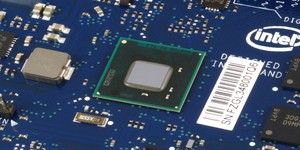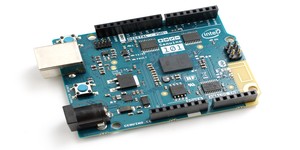
Intel has announced that it has partnered with the Commonwealth Scientific and Industrial Research Organisation (CSIRO) of Australia in a project which uses the Edison microcomputer to track bee activity.
In an effort to understand colony collapse disorder, which is wiping out bee populations across the globe, CSIRO has joined forces with Intel to develop an analysis platform which combines the company's low-power ultra-compact Edison single-board computer with small radiofrequency identification (RFID) tags fitted to the bees themselves. The Edison-powered monitoring systems are placed inside the beehive and records when each RFID-tagged bee passes by. Combined with environmental sensors linked to the Edison, this provides data which could be used to help protect bee populations around the globe.
'Bee colonies are collapsing around the world and we don’t know why,' explained Professor Paulo de Souza, Office of the Chief Executive Science Leader at CSIRO. 'Due to the urgent and global nature of this issue, we saw the need to develop a methodology that any scientist could easily deploy. This way we can share and compare data from around the world to collaboratively investigate bee health. This united effort is a fantastic example of the Internet of Things. The Intel Edison Breakout Board kit is the perfect platform for this type of research. It’s incredibly reliable, small in size, flexible with programming, and has low power consumption. It’s also easily customisable which means that if a scientist has a sensor they would like to add, they can virtually plug in and play.'
The Edison was originally unveiled as an SD-card format microcomputer powered by Intel's ultra-low-power Quark processor. The Quark's dated, Pentium-based instructions set led to poor performance, however, and the company soon switched to the Atom chip while retaining the Quark as a co-processor. A move away from the SD format followed, with the final design taking the form of a stamp-sized computer-on-module which connects to open-standard break-out boards.
The bee-tracking project began with a trial outing in Hobart, Tasmania, with 10,000 RFID tags being fitted to the backs of bees. Following its success, CSIRO is looking for collaborators to pick up kits based on the technology and fit them to their local hives as a means of building a global picture of bee activity and health, under the banner of CSIRO's Global Initiative for Honeybee Health (GIHH) project. More information on both the project and the kit is available from the official website.
In an effort to understand colony collapse disorder, which is wiping out bee populations across the globe, CSIRO has joined forces with Intel to develop an analysis platform which combines the company's low-power ultra-compact Edison single-board computer with small radiofrequency identification (RFID) tags fitted to the bees themselves. The Edison-powered monitoring systems are placed inside the beehive and records when each RFID-tagged bee passes by. Combined with environmental sensors linked to the Edison, this provides data which could be used to help protect bee populations around the globe.
'Bee colonies are collapsing around the world and we don’t know why,' explained Professor Paulo de Souza, Office of the Chief Executive Science Leader at CSIRO. 'Due to the urgent and global nature of this issue, we saw the need to develop a methodology that any scientist could easily deploy. This way we can share and compare data from around the world to collaboratively investigate bee health. This united effort is a fantastic example of the Internet of Things. The Intel Edison Breakout Board kit is the perfect platform for this type of research. It’s incredibly reliable, small in size, flexible with programming, and has low power consumption. It’s also easily customisable which means that if a scientist has a sensor they would like to add, they can virtually plug in and play.'
The Edison was originally unveiled as an SD-card format microcomputer powered by Intel's ultra-low-power Quark processor. The Quark's dated, Pentium-based instructions set led to poor performance, however, and the company soon switched to the Atom chip while retaining the Quark as a co-processor. A move away from the SD format followed, with the final design taking the form of a stamp-sized computer-on-module which connects to open-standard break-out boards.
The bee-tracking project began with a trial outing in Hobart, Tasmania, with 10,000 RFID tags being fitted to the backs of bees. Following its success, CSIRO is looking for collaborators to pick up kits based on the technology and fit them to their local hives as a means of building a global picture of bee activity and health, under the banner of CSIRO's Global Initiative for Honeybee Health (GIHH) project. More information on both the project and the kit is available from the official website.

MSI MPG Velox 100R Chassis Review
October 14 2021 | 15:04








Want to comment? Please log in.